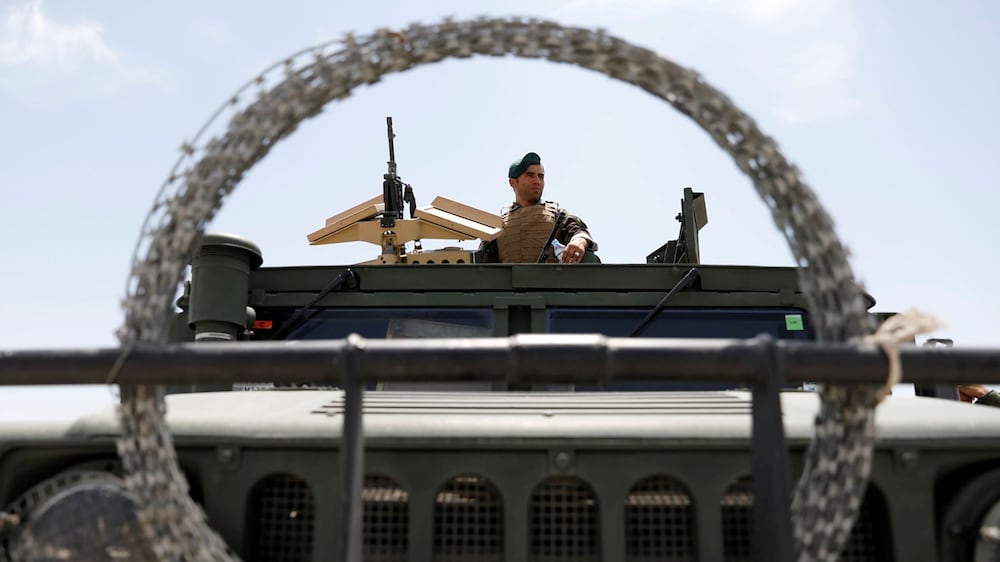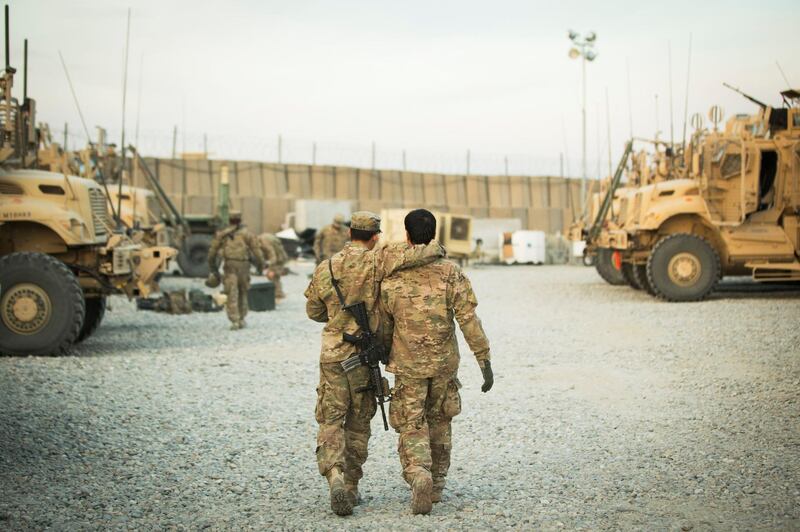When Aemal Sanjeeda fled his native Afghanistan with his wife and daughters in 2019, he locked his apartment door with all the beds, tables and other furniture in place, ready for the family's return at some unknown point in the future.
“I just locked the door. Everything is still inside, the way it was,” Mr Sanjeeda told The National from his home in Virginia.
Even though Mr Sanjeeda was hounded out of the country by death threats from Taliban militants, who accused him of spying due to his work connected to the US government, he still hopes to one day return and give something back to his homeland.
The vacillating uncertainty he describes is not uncommon among the many thousands of Afghans who have received a so-called special immigrant visa (SIV) to relocate to America after receiving death threats from the insurgent group.
As the US prepares to pull its troops out of Afghanistan by the end of August, Mr Sanjeeda is only one among millions whose future is now hanging in the balance in this volatile endgame to the almost two-decade war.
“I appreciate the government and people of the US for the help and support and I love to be here and my children are very happy in school. But if we see the Taliban is gone, there is a chance for not just me to return but a lot of other Afghans too,” said Mr Sanjeeda, who worked in several US roles including for the State Department and the US aid agency.
Still, he acknowledges that the prospects of a homecoming are bleak.
He spoke against the backdrop of military gains by the Taliban across multiple fronts that have raised fears Afghanistan’s security forces will be swiftly overwhelmed, particularly without vital US air support.
US President Joe Biden has made clear that America’s involvement in the war, launched after the September 11, 2001, attacks on New York and Washington, must end and Afghans must determine their own future.
Most of the 2,500 US and 7,500 Nato troops who were in Afghanistan when Mr Biden announced his exit strategy in April have already left, leaving Afghan soldiers to fight an invigorated Taliban seemingly bent on all-out victory.
US forces this month vacated Bagram Airfield — the US epicentre of its effort to oust the Taliban and hunt down Al Qaeda’s 9/11 masterminds — by shutting off the power and slipping away in the night without notifying the base’s new Afghan commander.
US accused of abandoning Bagram in middle of night as locals ransack air base

The top US general in Afghanistan, Gen Austin “Scott” Miller, relinquished command on Monday at a ceremony in Kabul — the latest signal that America's longest war was wrapping up and Afghans would control their own destiny.
Peace talks between the Taliban and the government supposedly taking place in Qatar have largely fizzled out, stoking fears that the insurgents will retake the country and reimpose their harsh version of Islamic law, with its strict dress codes and the shuttering of classrooms to girls.
While Mr Sanjeeda and other Afghans in the US may feel a need to return home at some point, many back in Afghanistan are running for the exit.
More than 1,000 Afghan soldiers fled into neighbouring Tajikistan last week to escape clashes with Taliban fighters. Thousands of families have left their homes in the city of Mazar-e-Sharif and other parts of the north amid Taliban gains.
The UN agency for refugees on Tuesday warned of a “looming humanitarian crisis” in Afghanistan because insecurity and violence have forced some 270,000 Afghans to flee their homes since January. In all, some 3.5 million Afghans have been displaced.
Against this backdrop, Mr Biden faces pressure from Congress to explain how he intends to assist thousands of Afghans like Mr Sanjeeda who helped the US military as translators, drivers and in other jobs.
The Biden administration has identified US sites away from the mainland, as well as third countries, where evacuated Afghans could temporarily stay while their visa applications are processed.
Mr Biden says some 2,500 Afghans have been granted SIVs since he took office in January. In all, more than 26,000 such visas have been allocated since December 2014, the US State Department said.
“Our message to those women and men is clear,” Mr Biden said.
“There is a home for you in the United States if you so choose. We will stand with you, just as you stood with us.”
Ahmad Abdullah, 38, another SIV recipient who lives in Maryland, also closely follows developments back in Afghanistan. He and his wife, two sons and a daughter arrived in the US in 2017 after receiving threats from the Taliban for working with US agencies.
Like Mr Sanjeeda, Mr Abdullah speaks English eloquently and possesses knowledge of aid and development work that would make him an asset in an impoverished country where less than half of its 38 million people can read and write.
By his estimation, the Taliban’s current rapid pace of military gains will slow down and the hardliners will ultimately be forced to co-operate with regional warlords and the reviled, corrupt government in Kabul in some kind of hybrid arrangement.
Such a scenario could pave the way for Mr Abdullah and other educated Afghans in the US to return home under a power-sharing government in which the Taliban’s harsher tendencies give way to a more confident pragmatism.
“I’m not closing my eyes and booking my ticket back tomorrow,” said Mr Abdullah.
“But I feel that even if the Taliban does return to power in some kind of negotiated settlement, they still need people like me. Not all Afghans spent their lives fighting with guns. They will still need people to write applications and run public institutions.”







